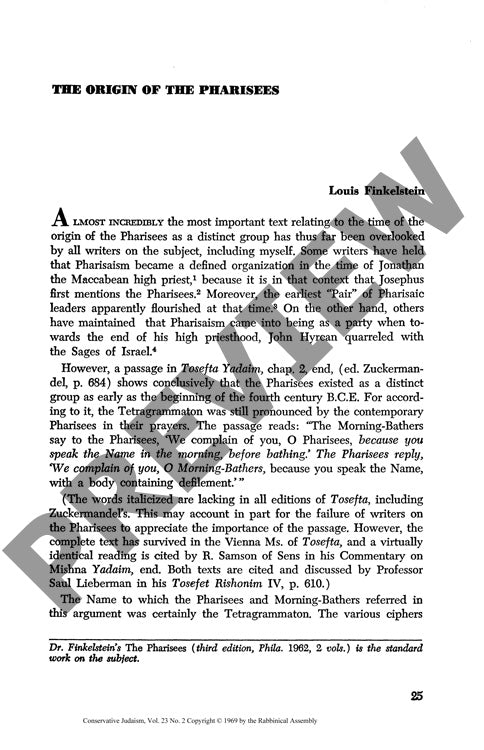The Origin of the Pharisees
Couldn't load pickup availability
When did the Pharisees truly emerge as a distinct religious group? Contrary to long-held assumptions placing their origins in the Maccabean period, evidence from overlooked rabbinic sources reveals their existence as early as the fourth century B.C.E. Through analysis of Tosefta Yadaim passages, baraita literature, biblical manuscripts, and linguistic patterns in the pronunciation of the Divine Name (Tetragrammaton), a clearer picture emerges of the Pharisees' early development. Early Pharisees uniquely pronounced the Tetragrammaton in their prayers, while competing sectarian groups adopted different naming conventions that reflected deeper theological disputes about God's nature. The gradual replacement of the Tetragrammaton with ciphers (aleph lamed and aleph dalet) can be traced through Chronicles, the Psalter, and the Septuagint, providing crucial chronological markers. This earlier dating also resolves the puzzling use of "Sadducees" as a term for Pharisaic opponents - a designation that makes sense only if the Pharisees emerged during the legitimate Zadokite priesthood rather than the later Hasmonean era. These findings fundamentally reshape our understanding of Second Temple Judaism's sectarian landscape, placing the Pharisaic movement's origins firmly in the Persian period, well before the Hellenistic crisis.

More Information
-
Physical Description
-
Publication Information
Published 1969
ISBN
-
Publication Credits
Louis Finkelstein

